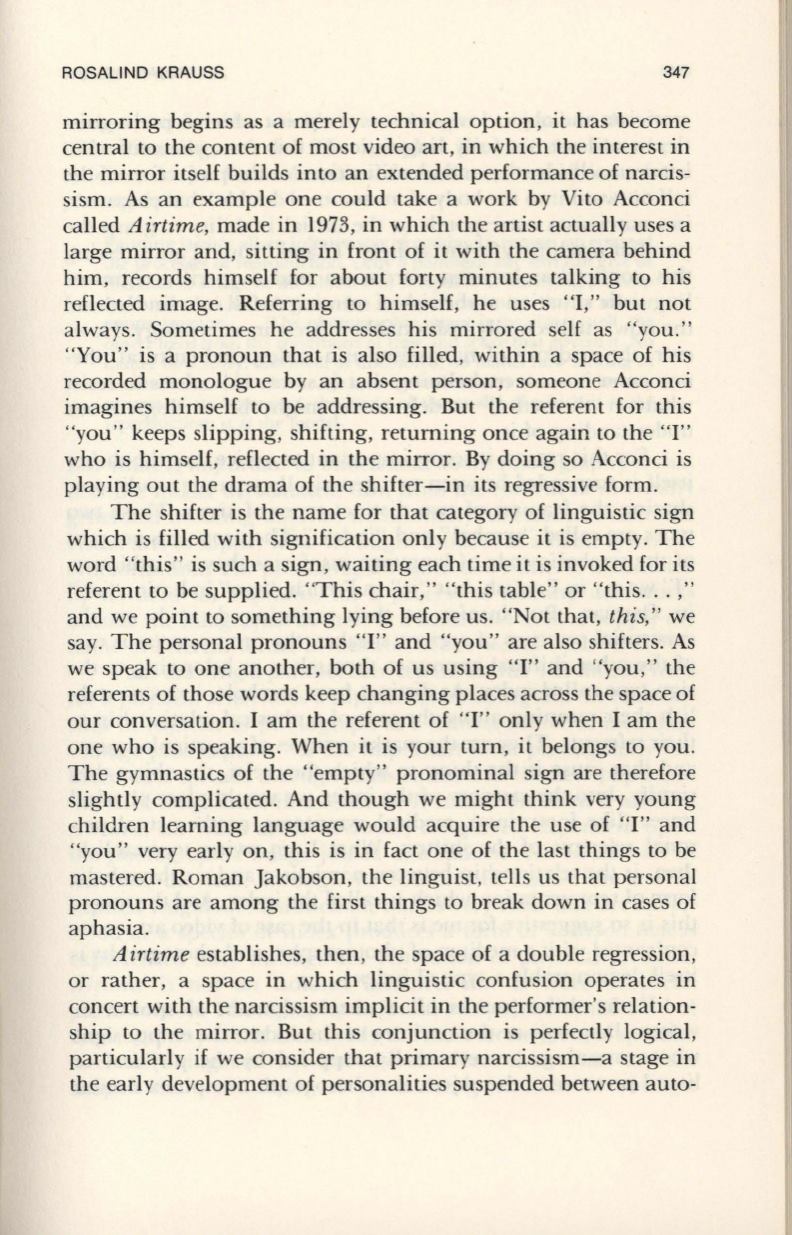
ROSALIND KRAUSS
347
mirroring begins as a merely technical option, it has become
central to the content of most video art, in which the interest in
the mirror itself builds into an extended performance of narcis–
sism. As an example one could take a work by Vito Acconci
called
Airtime,
made in 1973, in which the artist actually uses a
large mirror and, sitting in front of it with the camera behind
him, records himself for about forty minutes talking to his
reflected image. Referring to himself, he uses "I," but not
always. Sometimes he addresses his mirrored self as "you."
"You" is a pronoun that is also filled, within a space of his
recorded monologue by an absent person, someone Acconci
imagines himself to be addressing. But the referent for this
"you" keeps slipping, shifting, returning once again to the "I"
who is himself, reflected in the mirror. By doing so Acconci is
playing out the drama of the shifter-in its regressive form.
The shifter is the name for that category of linguistic sign
which is filled with signification only because it is empty. The
word "this" is such a sign, waiting each time it is invoked for its
referent to be supplied. "This chair," "this table" or "this... ,"
and we point to something lying before us. "Not that,
this,"
we
say. The personal pronouns "I" and "you" are also shifters. As
we speak to one another, both of us using "I" and "you," the
referents of those words keep changing places across the space of
our conversation. I am the referent of "I" only when I am the
one who is speaking. When it is your turn, it belongs to you.
The gymnastics of the "empty" pronominal sign are therefore
slightly complicated. And though we might think very young
children learning language would acquire the use of "I" and
"you" very early on, this is in fact one of the last things to be
mastered. Roman Jakobson, the linguist, tells us that personal
pronouns are among the first things to break down in cases of
aphasia.
A irtime
establishes, then, the space of a double regression,
or rather, a space in which linguistic confusion operates in
concert with the narcissism implicit in the performer's relation–
ship to the mirror. But this conjunction is perfectly logical,
particularly if we consider that primary narcissism-a stage in
the early development of personalities suspended between auto-


